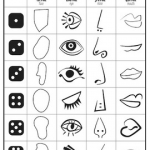Another and Yet Another Almanac Tidbit
Tuesday’s Say It For You blog post centered around one information tidbit from Harris’ Farmer’s Almanac, explaining what the “sugar plums” famously mentioned in “‘Twas the Night Before Christmas”. Today I’ll cite some other tidbits from the Almanac that I and fellow content marketers can put to good use in our content…
Tidbits about the history of popular products:
(Possible content writing purpose: educating readers about the history of the product the client manufactures or sells)
- The origin of Rubik’s Cube
The Rubik’s Cube, never intended as a toy, was a 3-D model used by a Hungarian professor more than fifty years ago to explain spatial relationships to design students.
- The origin of Post-It Notes
A chemist at 3M Company found the slips of paper he used to mark his place in the church hymnal book would not stay put. Wondering if an adhesive previously created by a colleague (a product which had been considered useless because it was not very sticky or strong) might work on paper…
Tidbits about company or product names:
(Possible content writing purpose: educating readers about the history of the company and choice of company name)
- The sport of volleyball
As educational director of the YMCA in Holyoke, Mass, William Morgan noticed that not al the men had the vigor and stamina needed to play basketball. He invented s sport he called “mintonette”, asking A.G. Spaulding & Bros. to develop a ball for the new sport. The game proved a hit, but one delegate was troubled by the name and suggested “volleyball”. - From one code to another
When Drexel Institute of Technology graduates Joseph Woodland and Bernard Sliver discovered a way to stock and track inventory, they filed a patent describing “article classification through the medium of identifying patterns”. Since Woodland knew Morse Code, the new technology was named the barcode.
Tasty “almanac tidbits” help content readers who visit the website feel an “I’m-in-the-know” connection with the providers of products and services.







Follow us online!